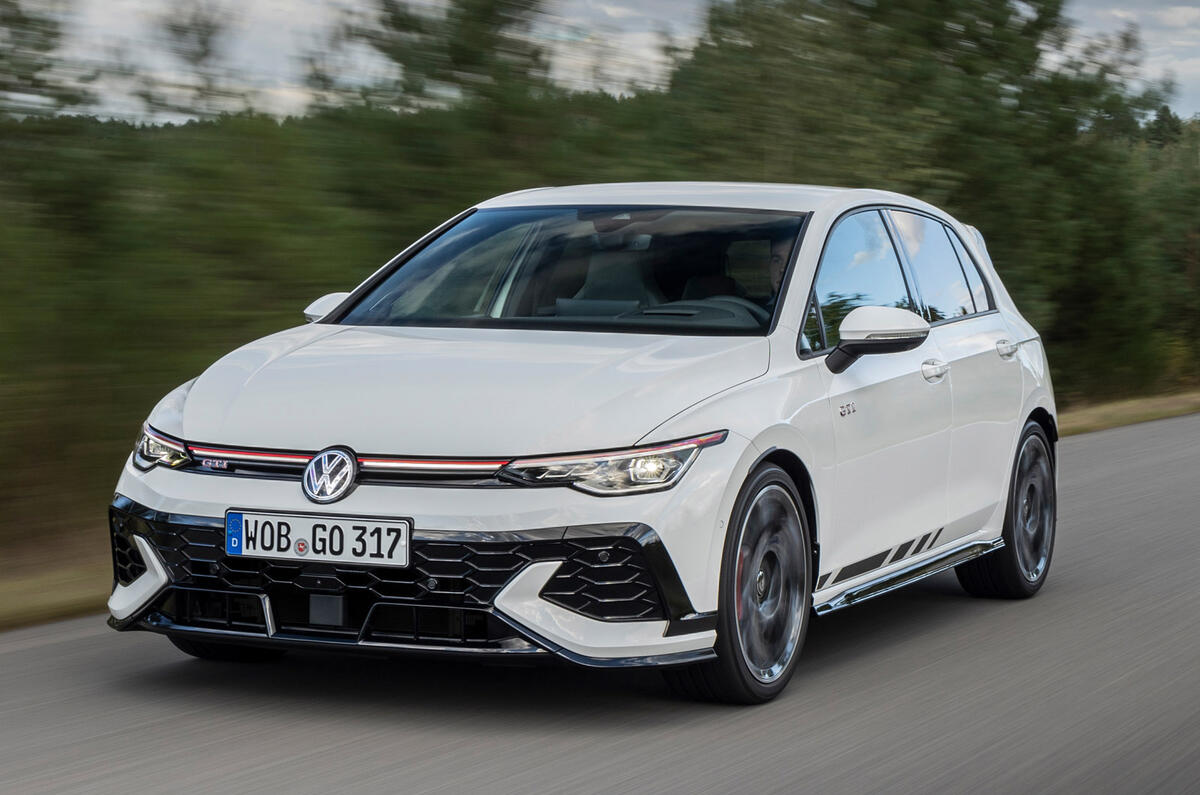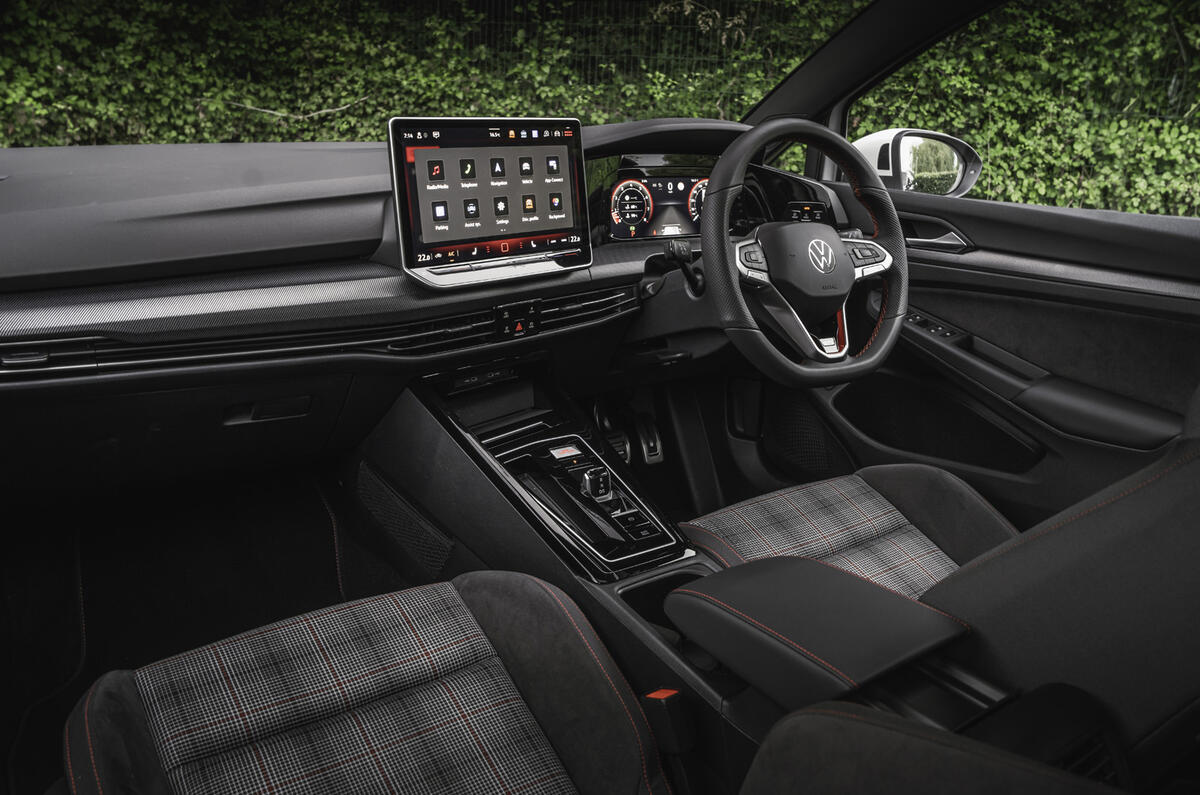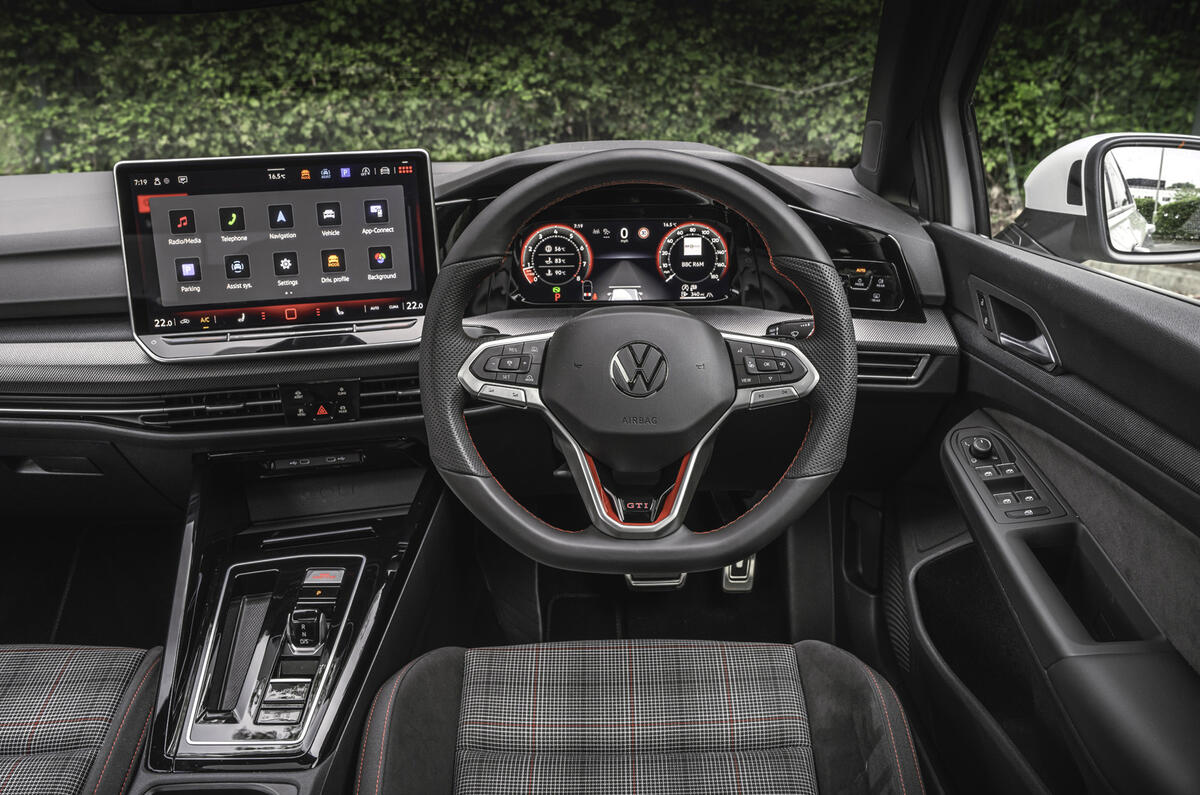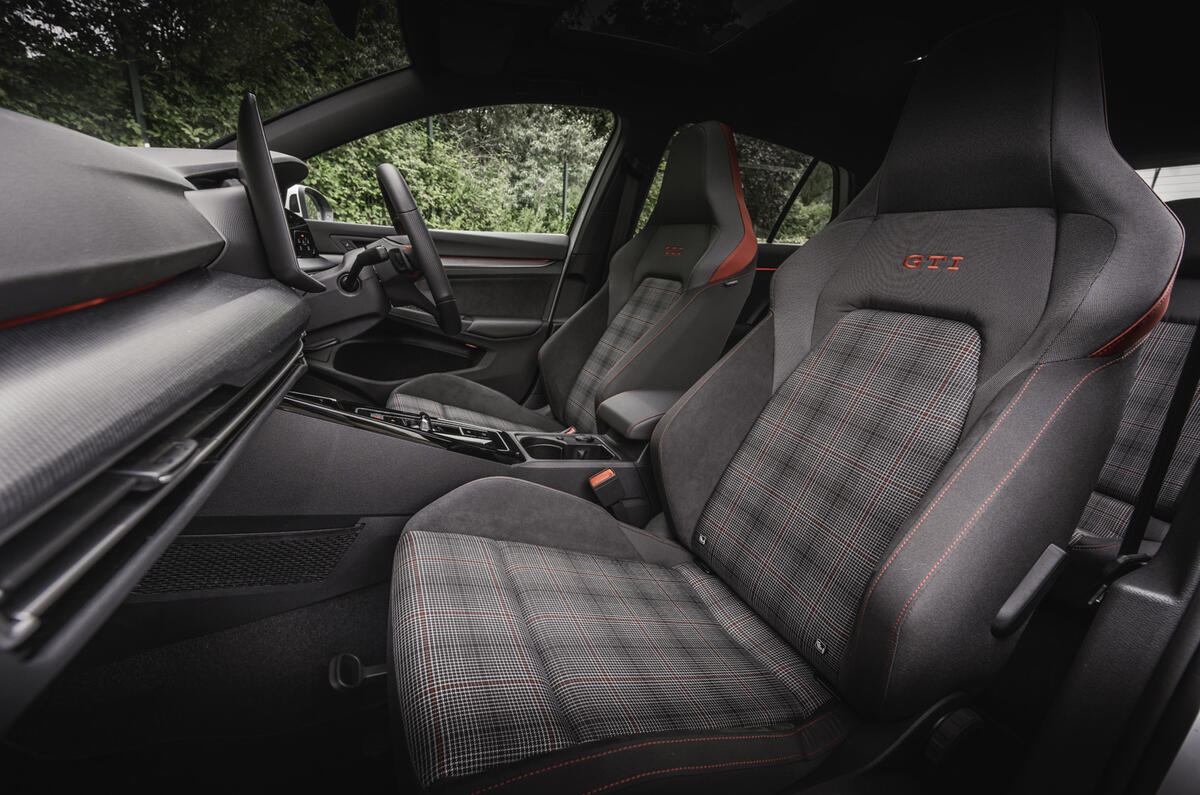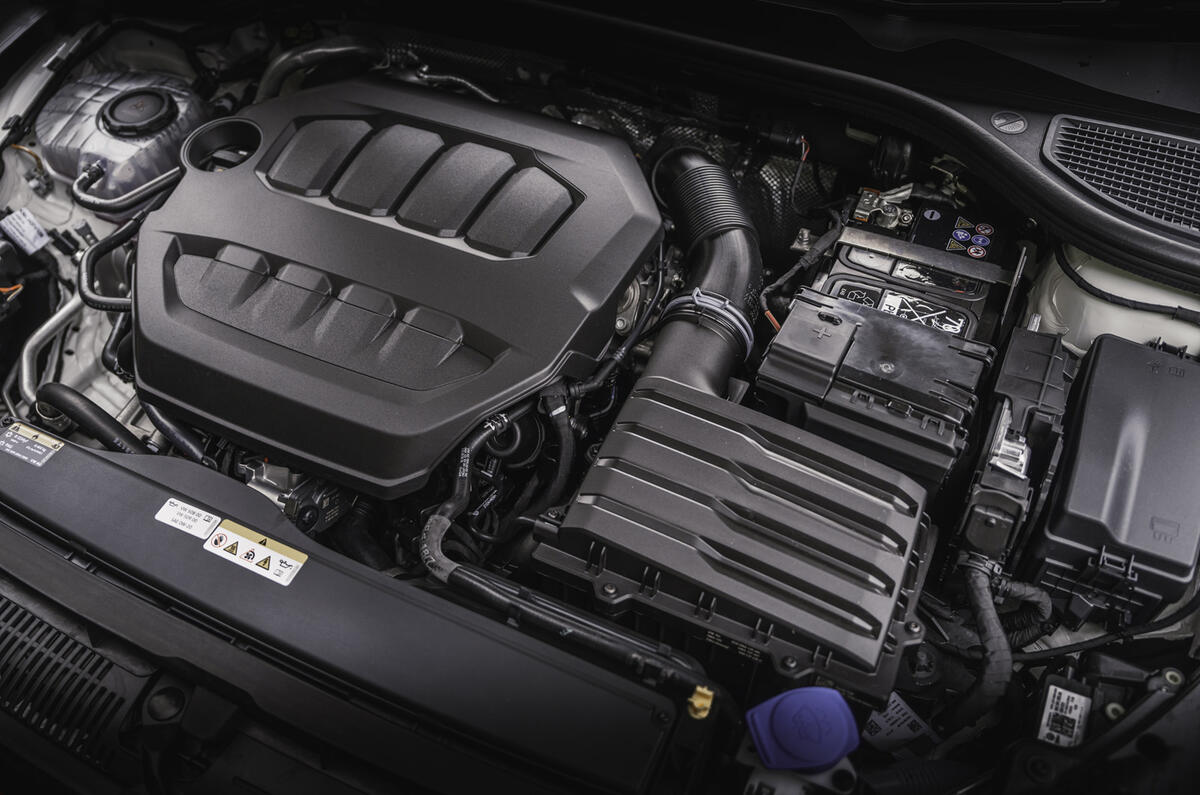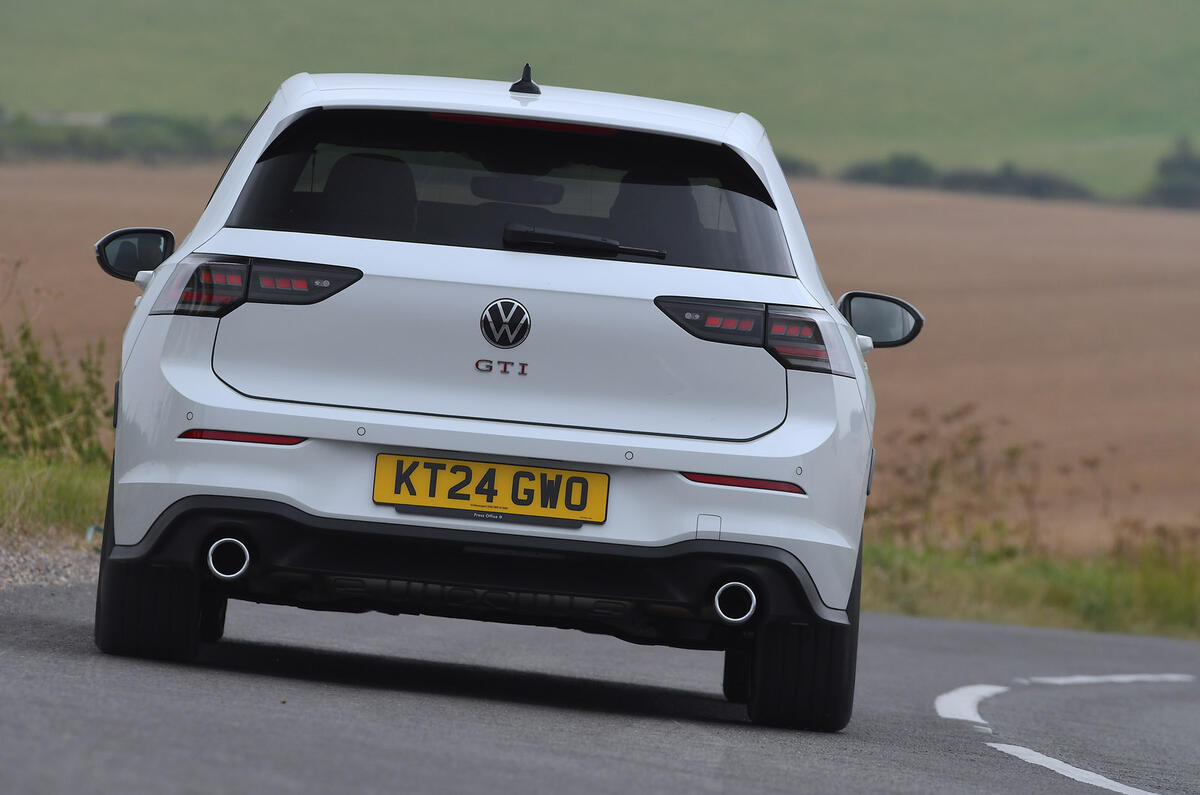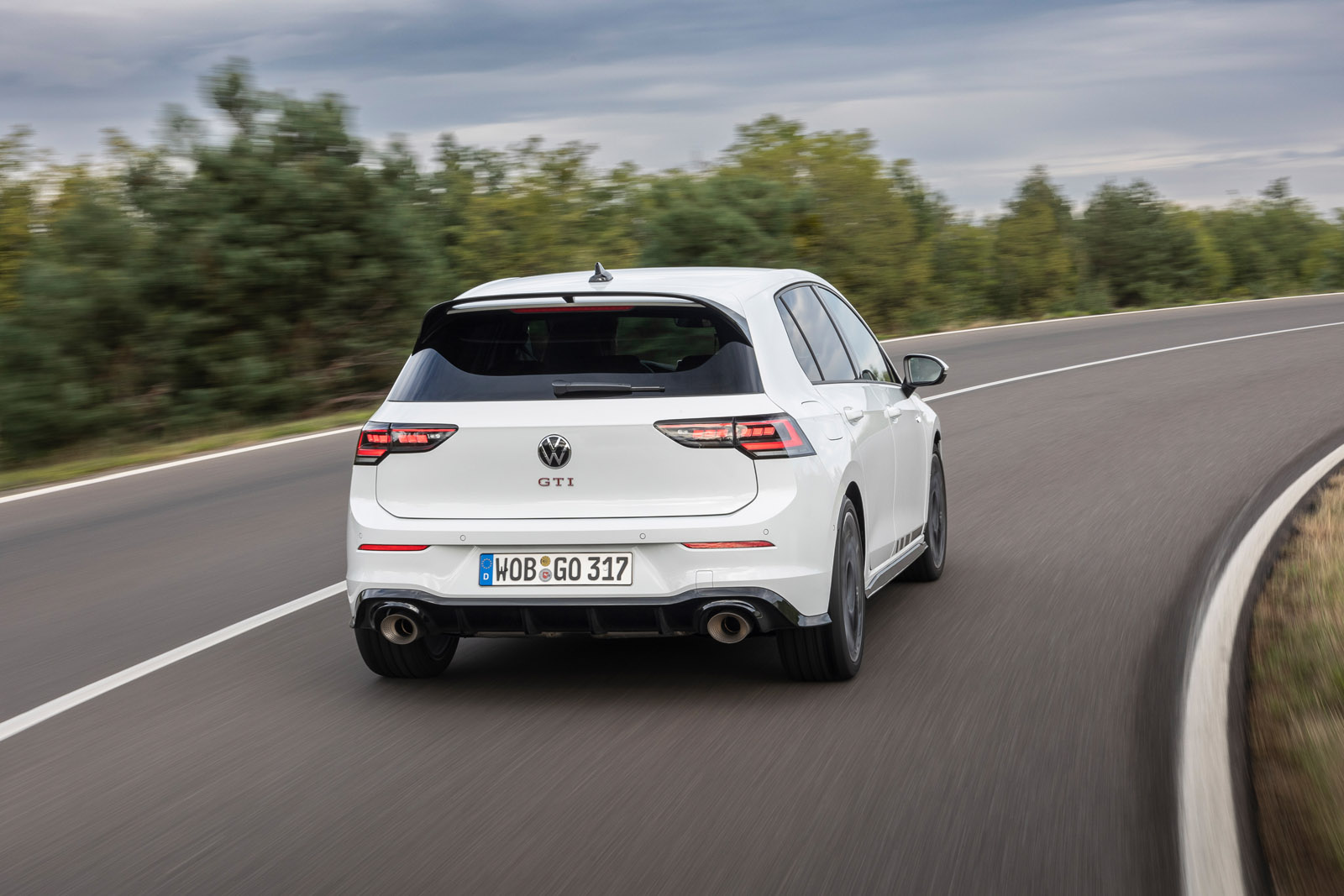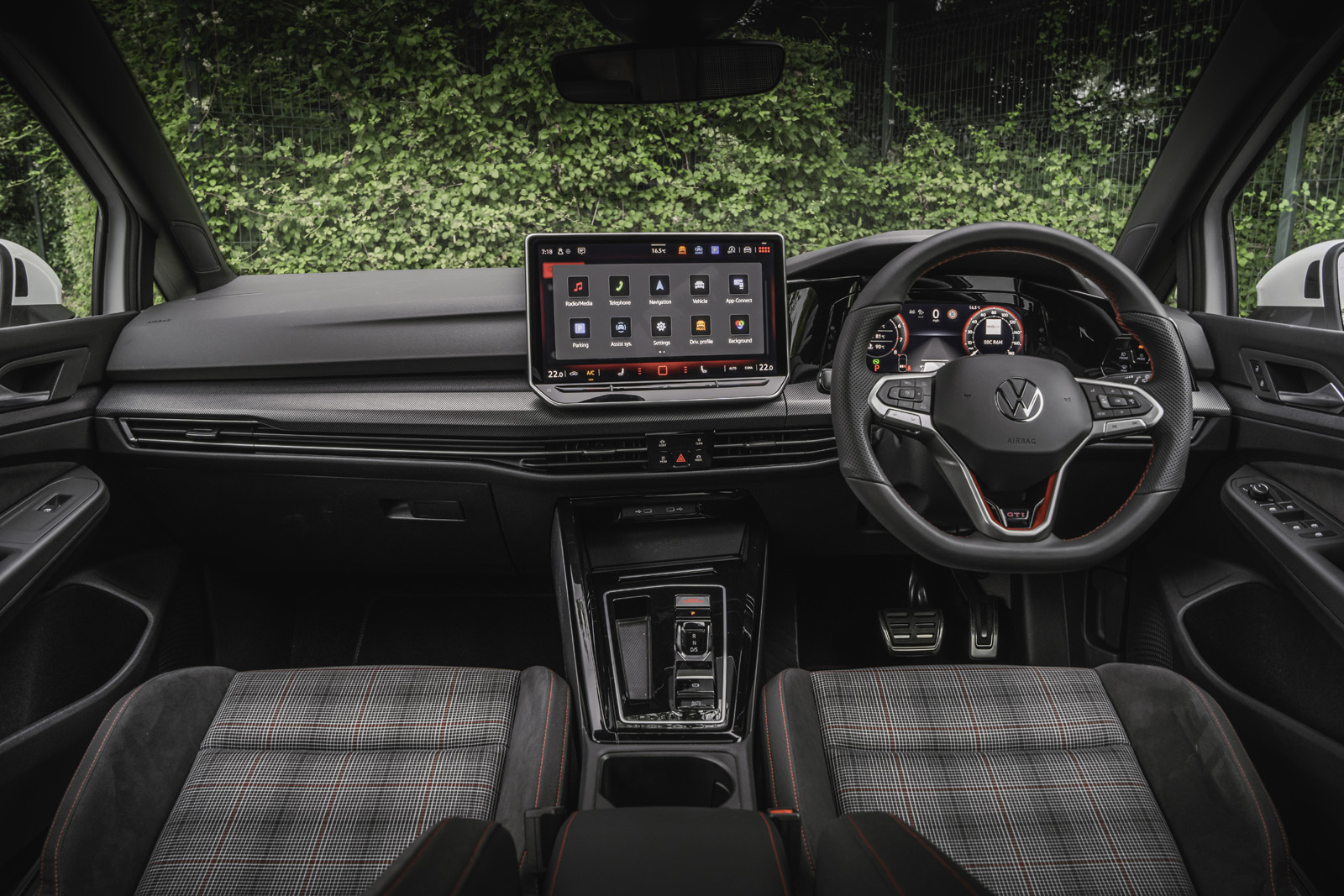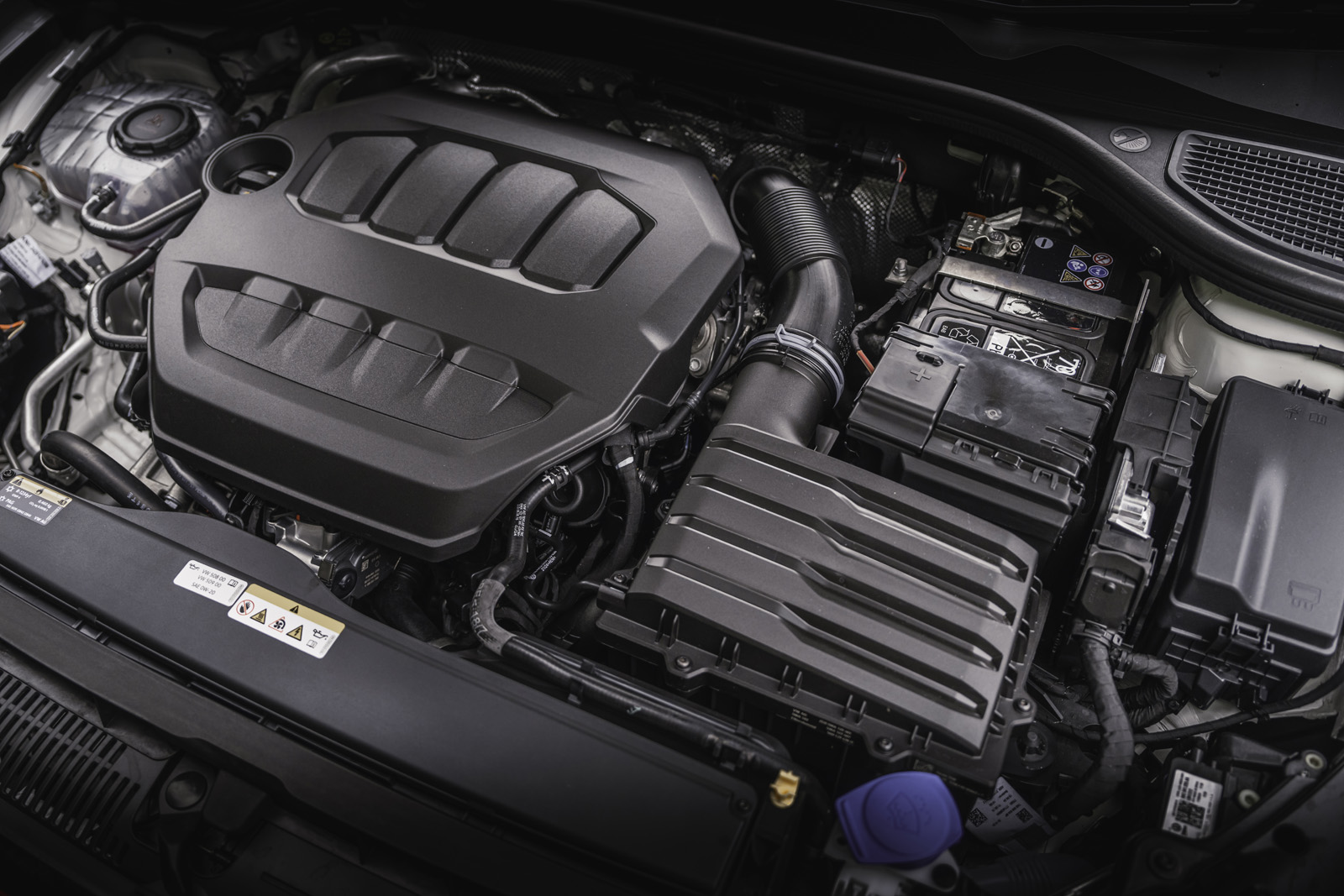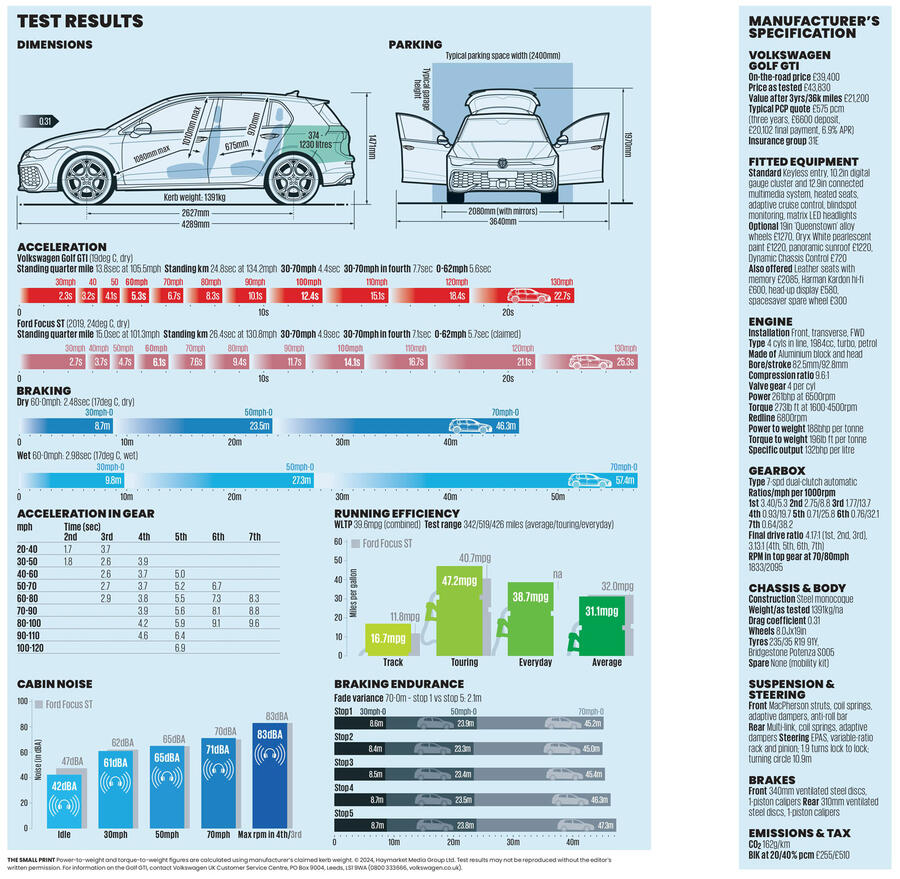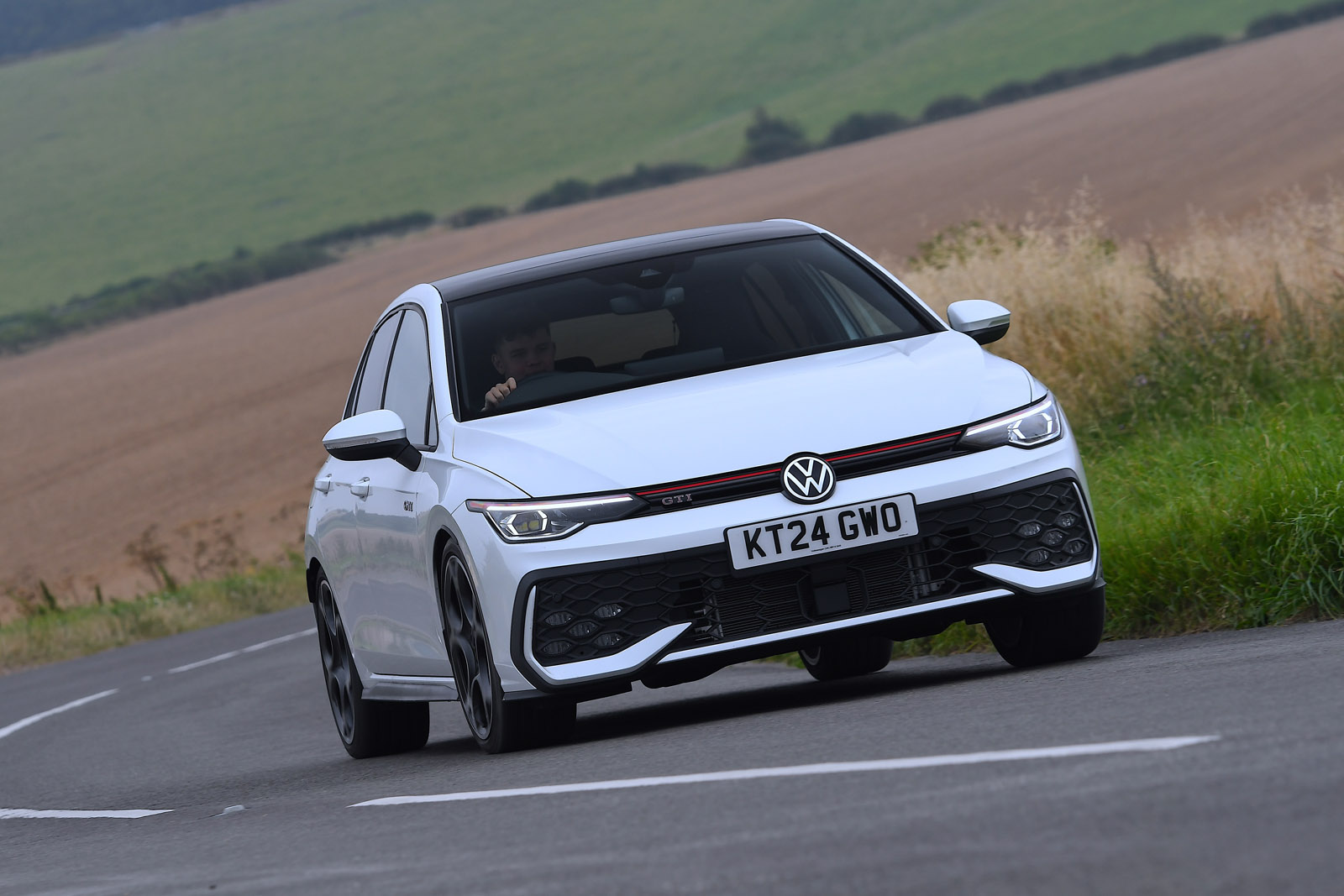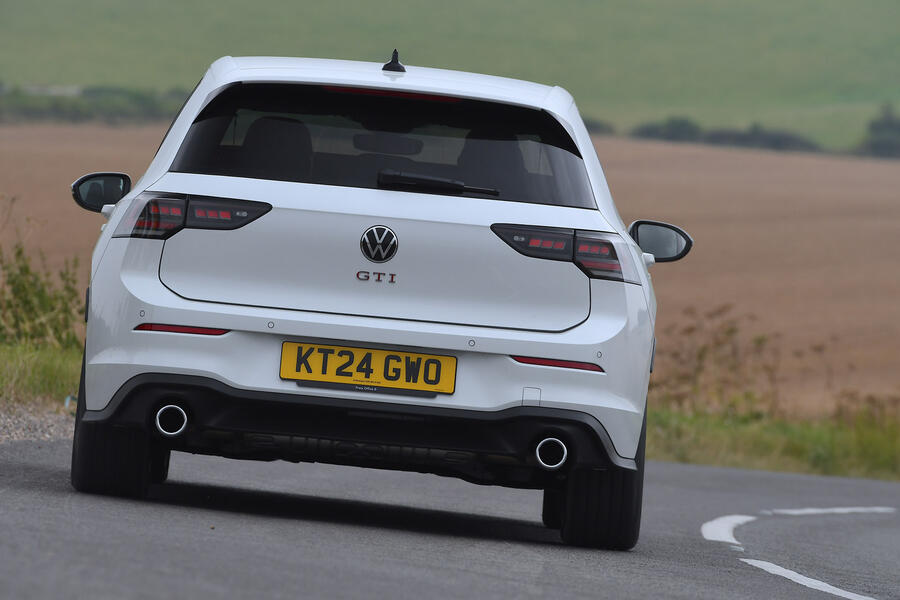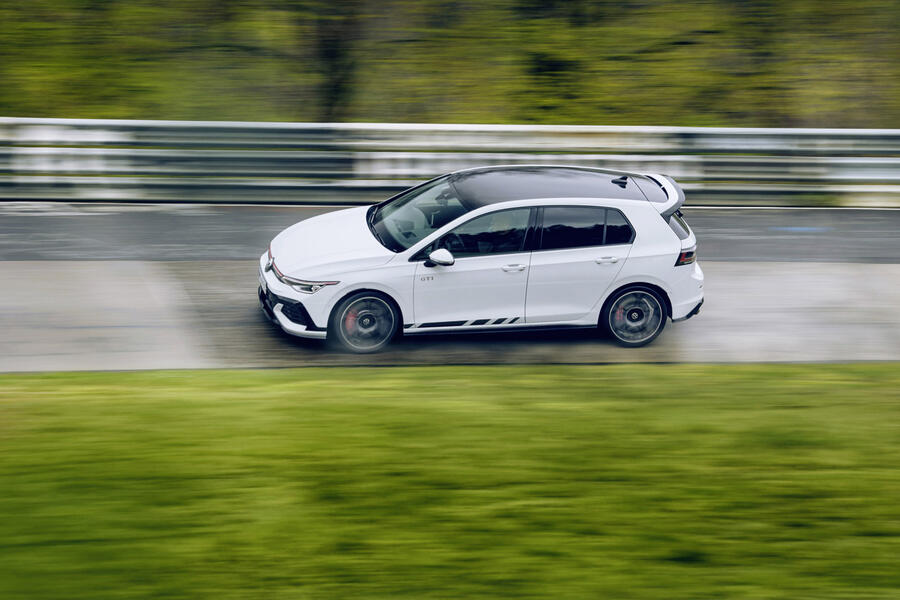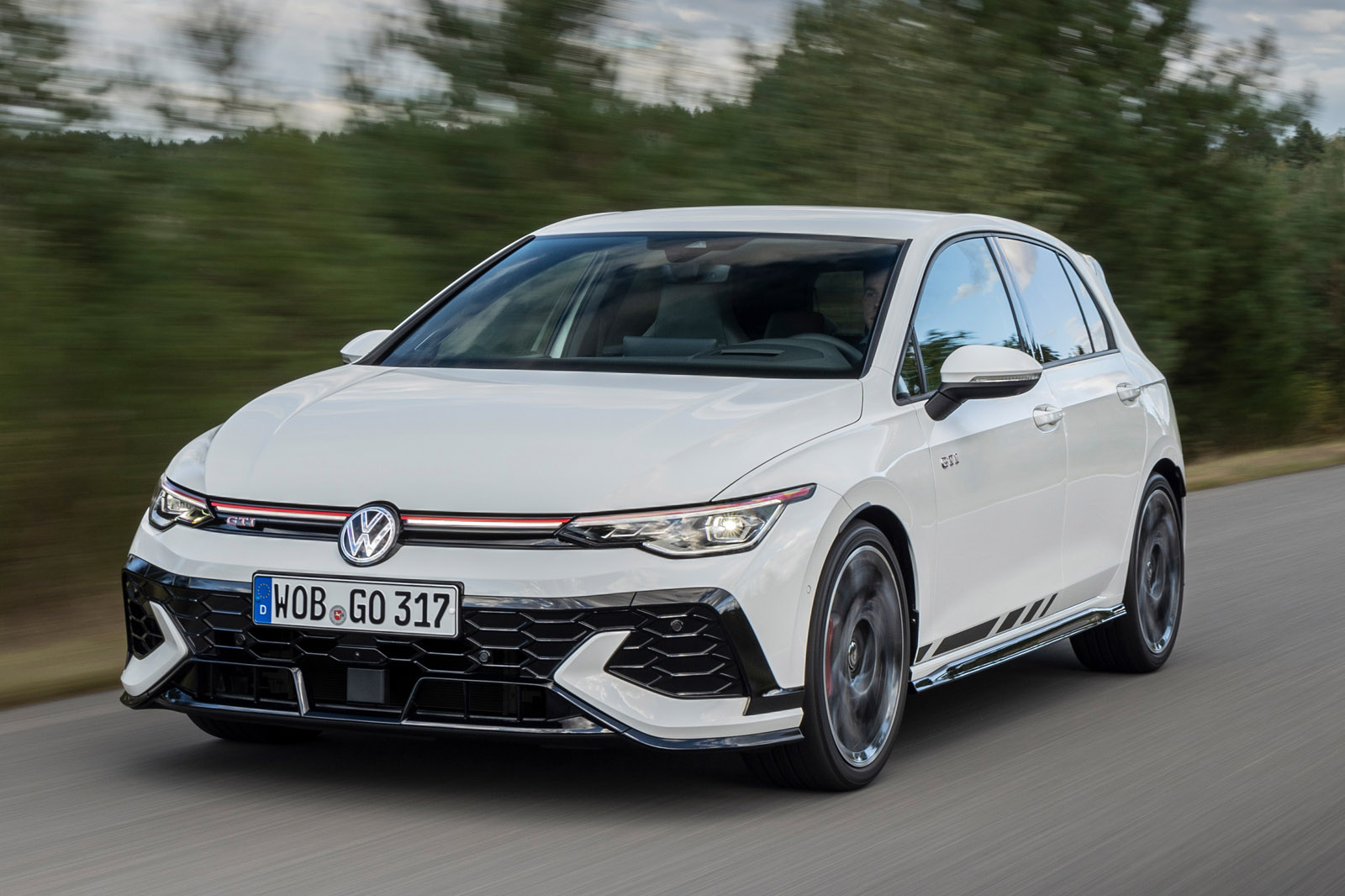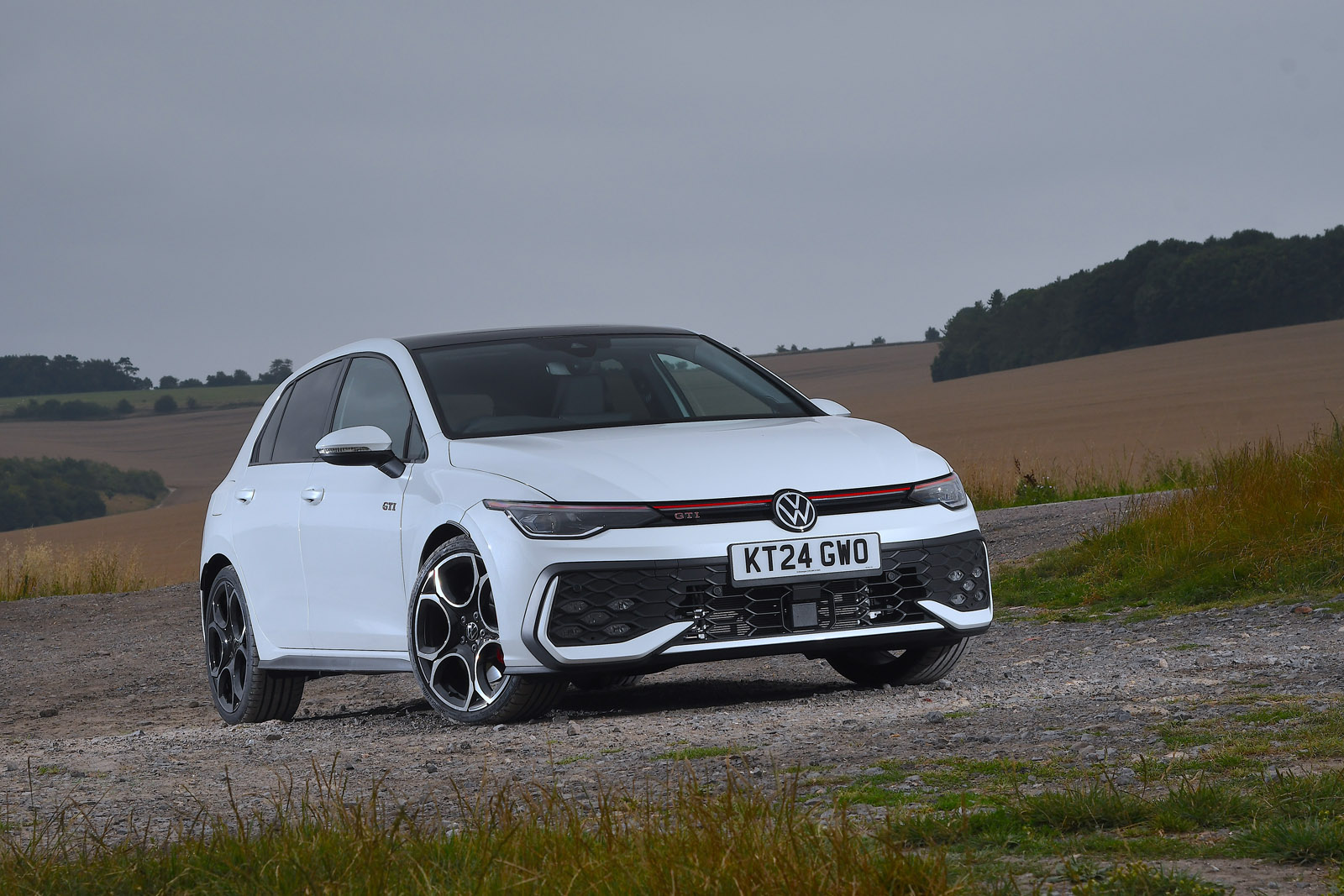As with the standard Golf, the interior updates are subtle but significant and mainly concern the ease of use of the on-board tech (which we will look at in a moment). Elsewhere, the Golf GTI is still very much a Golf GTI. Manually adjustable (including the lumbar support) sports seats upholstered in tartan cloth remain standard.
Black leather memory seats are an option, but the grey fabric with red accents brightens up an otherwise dark cabin and gives the GTI its unique character, so we would stick with the standard items. Tall drivers wished for more thigh support, but most testers found the seats very comfortable and supportive.
A Golf, whether GTI or otherwise, is right in the middle of the class when it comes to interior space. Adults have adequate leg room in the back, and there’s no adventurously designed roofline to impinge on head room. The boot, too, is the same as that of a normal Golf, and the official volume figure of 377 litres arguably underrates it, because lifting the floor reveals a generous amount of additional storage space – enough, in fact, that Volkswagen is able to offer a spacesaver spare wheel as an option.
General interior quality is much as before. Some scratchy plastics can be found, and we’re not exactly fans of the fingerprint-sensitive gloss black centre console, but all of this is quite typical for the class. Everything feels solidly built, though, and the main touchpoints are satisfyingly tactile.
Multimedia – 4 stars
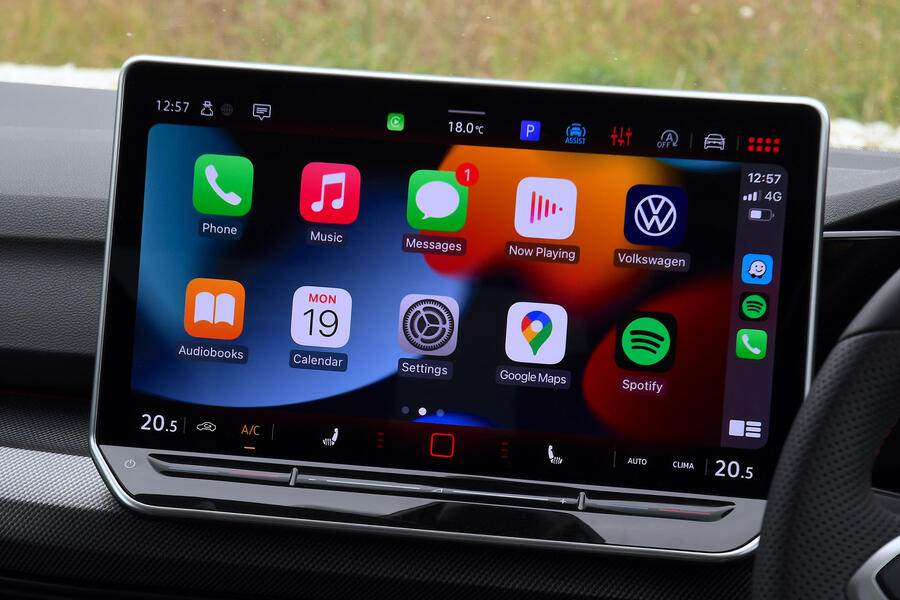
The touch-sensitive pads on the steering wheel – which were always too easy to activate by accident and yet too hard to operate deliberately – have gone in favour of standard buttons, like those the lower-rung Golf models always had.
The central infotainment screen has grown substantially – from 10.0in to 12.9in – and is verging on the point of being too big, because it’s starting to encroach on forward visibility. At least the latest iteration of the software it runs, dubbed MIB4, works pretty well.
Configurability is the name of the game here, so drivers will have to play around with it for the first week of ownership in order to settle on a layout they like, but after that it should become quite intuitive.
There are two permanent shortcut bars now: one has climate control functions, including the heated seats, at the bottom; the other with customisable shortcuts at the top. The home screen can also be arranged to display the stuff that you find useful, and the same is true of the digital gauge cluster, making it one of the more successful applications of this tech.
The physical touch bars for the temperature and media volume remain, but they now light up at night, and as before you don’t have to slide your finger across them: you can simply tap them like a button.




